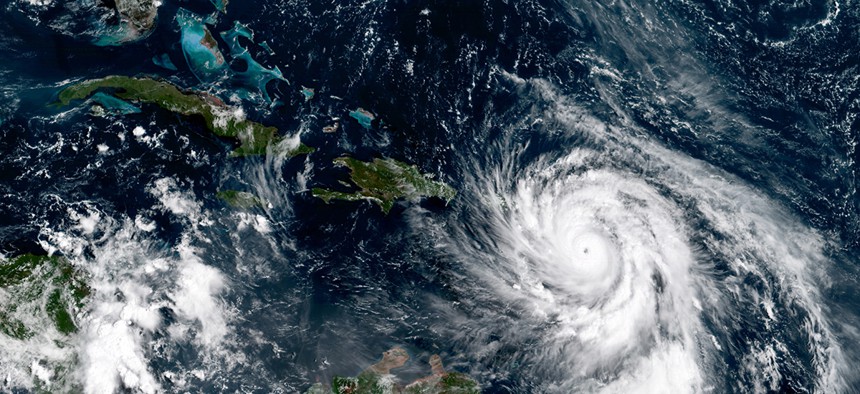Third Time's a Charm? NOAA Reschedules Next-Gen Weather Satellite Launch

This NOAA GOES-16 satellite image taken Sept. 19, 2017, shows Hurricane Maria southeast of Puerto Rico. NOAA/AP
Wind delayed the two previous launch dates.
After a series of project delays and two launch attempts scrubbed this week due to windy weather, the federal government’s newest hurricane forecasting weapon is set to launch this weekend.
JPSS-1 is the first of three satellites developed by the National Oceanic and Atmospheric Administration under the $10 billion Joint Polar Satellite System to replace an aging fleet of polar-orbiting satellites that are more than 20 years old.
JPSS-1 is expected to launch Saturday from Vandenberg Air Force Base in California, and will settle into orbit 500 miles above the Earth’s surface, taking planet-wide weather measurements 14 times per day. (Those interested in watching the launch live can tune in to NASA TV).
According to Louis Uccellini, director of NOAA’s National Weather Service, polar-orbiting satellites collect the lion’s share—85 percent—of the weather data that flows into forecast models. Once launched, JPSS-1 will go through a lengthy checklist process but should be operational in less than one calendar year.
When it comes online, its cadre of specialized equipment, developed by contractors including Raytheon, Northrop Grumman, Harris Corp. and Ball Aerospace, will provide a huge increase in data expected to both increase short-term weather forecasts across the country and improve how emergency management agencies position resources as large weather systems like hurricanes become imminent.
This is the second important environmental satellite launch in as many years for NOAA. Last year, GOES-16—the first of an $11 billion geostationary satellite constellation—launched and is expected online before the year is out.



